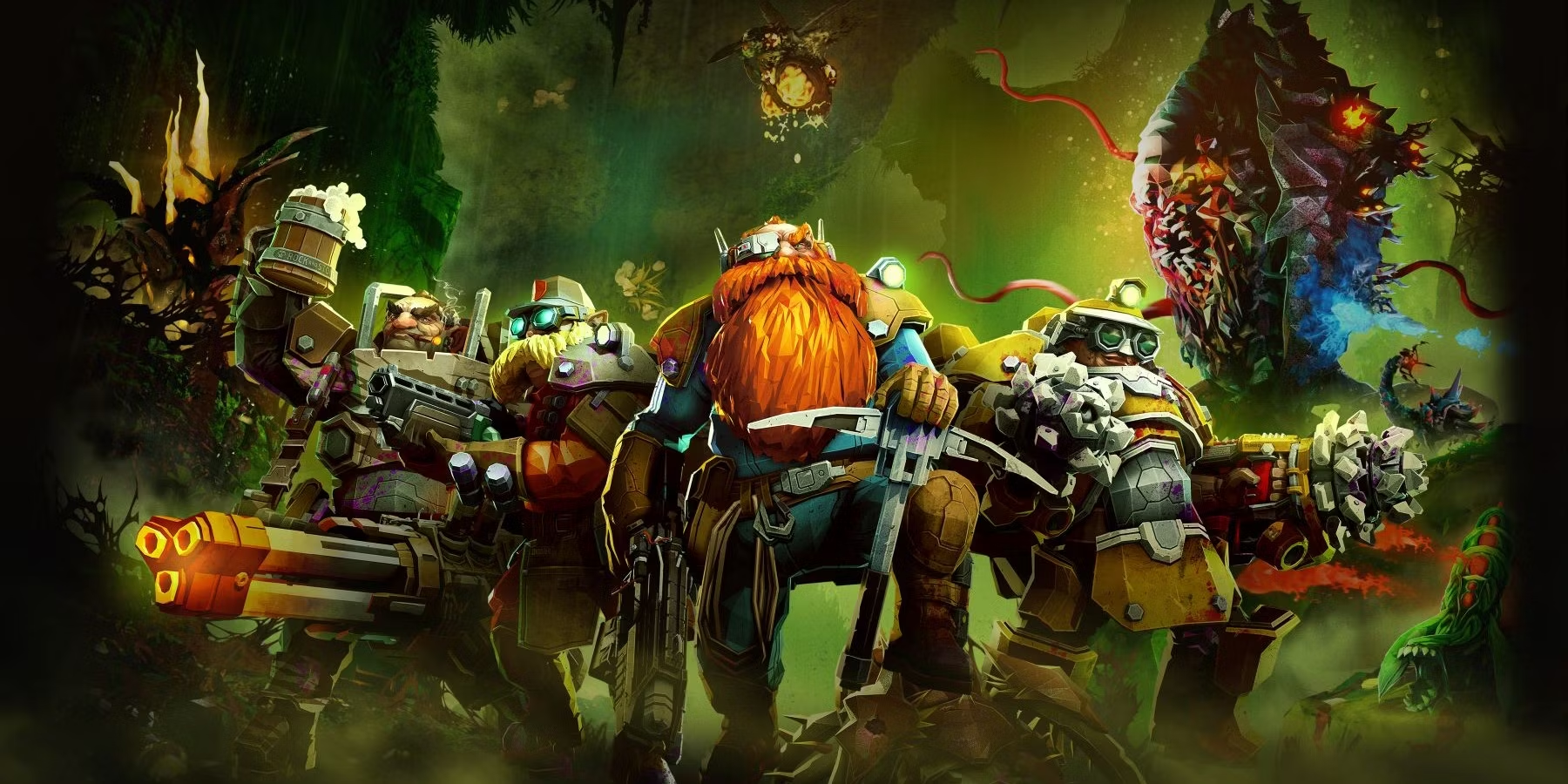
Published: August 31, 2024 at 2:07 AM
Updated: November 10, 2024 at 8:48 PM
By: Gregory Kirchoff
Mutualism in the Mines
Deep Rock Galactic is one of my favorite games of all time. It’s an objective-based cooperative horde shooter where you and three other dwarves undertake industrial tasks like mining and fracking on an alien planet, all while decimating the local ecosystem in self defense. The cooperative aspects of this game are stronger than any I’ve encountered in other titles. In most cooperative games, teamwork is often heavily scripted—forcing all players to push a button at the same time, for example—or is largely superficial. But in Deep Rock Galactic, cooperation feels genuinely integral to the gameplay. You truly feel like part of a specialized task force, fulfilling a distinct and valuable role. Each player brings a unique set of skills and tools to provide tactical support to their teammates, and you can (usually) trust that they’ll do the same for you.
What I want to explore in this post is whether this game’s unique charm and cooperative gameplay simply attracts the most wholesome gamers—or if the game’s design intentionally mimics the conditions that foster mutualism in real-world ecosystems.
What is Mutualism?
Mutualism is a form of symbiosis in which the interactions between the involved organisms are beneficial to each other. To make sense of this, we need to know what symbiosis means.
What is Symbiosis?
Symbiosis describes the interactions that occur between two different organisms that are in close proximity together. This definition provides a clue as to why Deep Rock Galactic makes players feel like they’re constantly interacting with one another: the game mechanics are designed to encourage (or even force) players to stay close together.
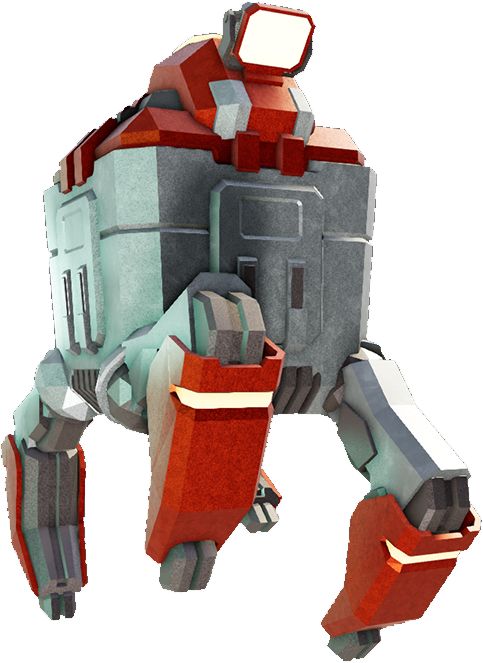
As you traverse the caves in search of resources, you’ll quickly realize that your dwarven pockets can only carry so many minerals before you need to deposit them. Fortunately, a robotic walking minecart called the M.U.L.E. (or “Molly”) accompanies your team on most missions. The M.U.L.E. plays a crucial role in fostering a kind of symbiosis among the dwarves, acting as a movable anchor point. It follows the team as they explore, ensuring that no dwarf can stray too far on their own. As you venture further from the group, you’ll inevitably collect minerals until you reach your carrying capacity. Once that happens, any additional minerals you mine will simply fall to the ground. To deposit your haul, you must return to the M.U.L.E.—which conveniently also brings you back to your teammates.
This constant need to stay close to the M.U.L.E. ensures frequent opportunities for players to interact, but proximity alone isn’t enough. For cooperation to feel as natural and rewarding as it does in Deep Rock Galactic, those interactions need to be positive. To understand why this works so well, let’s look at some examples of mutualism in nature.
Mutualism Examples
Pollinators and Flowers
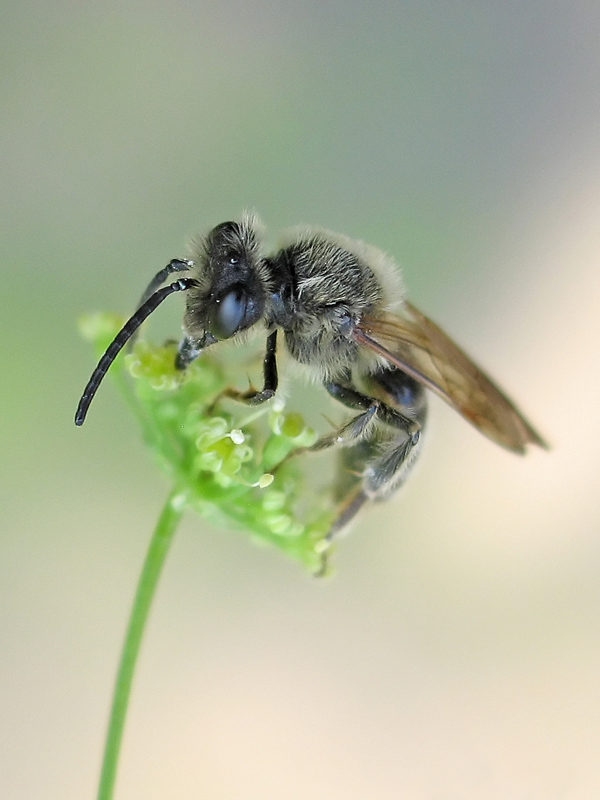
Pollinators like bees and butterflies play a crucial role in the life cycle of flowers. While the flowers are immobile, they rely on these pollinators to distribute their genetic material over long distances. In return, the pollinators receive nectar as a food source. This mutualistic exchange allows both the flowers and the pollinators to benefit from each other’s existence.
Humans and our Microbiome

Humans host a diverse community of microorganisms in our gut, collectively known as the microbiome. These microbes perform essential functions such as protecting against pathogens, modulating our immune response, and synthesizing nutrients that our bodies cannot produce. In exchange, we provide them with a stable environment and a constant supply of nutrients from the food we consume. This relationship is a classic example of mutualism, where both the human host and the microbes benefit.
Ants in the genus Pseudomyrmex and trees in the genus Acacia

Acacia trees offer food and shelter to ants in the genus Pseudomyrmex. In return, these ants protect the trees from herbivores and competing plants, often cutting down any vegetation that threatens their host tree. This relationship benefits both parties: the ants gain a secure habitat and a steady food source, while the tree receives protection from potential threats.
Let’s Look at These a Little Closer
To understand the dynamics at play, it’s important to examine these examples through the literal definition of mutualism: two organisms in close proximity benefiting from their interactions. However, this doesn’t imply that these organisms are consciously cooperating, are friends, or are even aware of each other’s existence. Each organism behaves in a way that benefits itself, and their actions happen to create a mutual benefit. It’s easy to anthropomorphize these interactions, but a more accurate perspective might be that these organisms are mutually exploiting each other for their gain.
Let’s dive deeper into these examples to explore whether the involved organisms are truly “friends” or if they are independently pursuing their own interests in a way that coincidentally benefits both parties.
Nectar Thievery
Butterflies are well-known pollinators, using their long proboscis to sip nectar while unintentionally transferring pollen from flower to flower. However, their long proboscis sometimes allows them to reach the nectar without coming into contact with the flower’s pollen, a behavior known as “nectar thievery.” In these cases, the butterfly benefits by obtaining nectar, but the flower gains nothing in return. Despite being seen as a hallmark of pollinators, butterflies are not aware of their ecological role; they simply seek out nectar wherever they can find it. Sometimes, this behavior benefits the flowers, and sometimes it doesn’t. This example highlights the importance of avoiding anthropomorphism in interpreting these interactions. For game developers, this suggests that players don’t need to consciously understand their roles for cooperation to emerge naturally.
Opportunistic Infection
Many members of our gut microbiome, such as Bacteroides fragilis, engage in a mutualistic relationship with us. B. fragilis helps us by fermenting carbohydrates to synthesize fatty acids we can use for energy and breaking down complex molecules that other microbes can later use. Studies have shown that animals lacking gut bacteria require 30% more calories to maintain the same body mass. However, our beneficial relationship with B. fragilis is conditional—it must remain within the gut. If it enters the bloodstream due to surgery, disease, or trauma, it can cause severe infections and is often highly resistant to antibiotics. This example illustrates that while mutualism provides benefits, it does not mean the organisms are “friends” in any human sense of the word.
The Ants and the Trees
The relationship between Acacia trees and ants is a clear example of how mutualistic partners can exploit each other. In some Acacia species, like Acacia cordia, ants live inside hollowed-out leaves. To expand their living space, the ants may destroy the tree’s flower buds, forcing the tree to produce more leaves instead of flowers. This behavior imposes a fitness cost on the tree. Conversely, some Acacia trees, like Acacia hirtella, fight back by shrinking the ant shelters around flower buds just before blooming, preventing the ants from destroying them. Additionally, some Acacia trees secrete enzymes in their nectar that prevent the ants from digesting anything other than the tree’s nectar, making the ants chemically dependent and effectively trapping them in a form of servitude.
Despite these one-sided negative aspects, these relationships persist because they are, overall, beneficial to both parties. The mutualistic relationship continues because the benefits outweigh the costs for both the ants and the trees.
From Nature to the Mines
Now that we’ve explored the complexities of mutualistic relationships in nature, the question becomes: how do we translate this into a cooperative game like Deep Rock Galactic? Specifically, how can we get a group of strangers, who have never met before, to cooperate effectively to achieve a common goal?
As we’ve seen, mutualistic relationships don’t require true friendship or even an awareness that the other party exists. They simply require two conditions: proximity and a mutual need.
Proximity and Interaction
The first step in fostering cooperation among players is to ensure they remain in close proximity to each other. In nature, this proximity allows for frequent interactions, which can lead to mutually beneficial outcomes. In the game, maintaining closeness among players ensures frequent encounters and opportunities to collaborate. But simply putting players near each other isn’t enough to guarantee positive interactions.
Creating Interdependence
To encourage players to cooperate, the game must create situations where they need each other. In nature, organisms are often in proximity because their survival depends on exploiting each other’s strengths to compensate for their own weaknesses. For example, pollinators like bees can move freely but can’t produce their own food, while plants can produce food but can’t move. Each gains something essential from the other because their strengths and weaknesses complement each other perfectly, even if they are unaware of it.
Strengths and Weaknesses
Driller
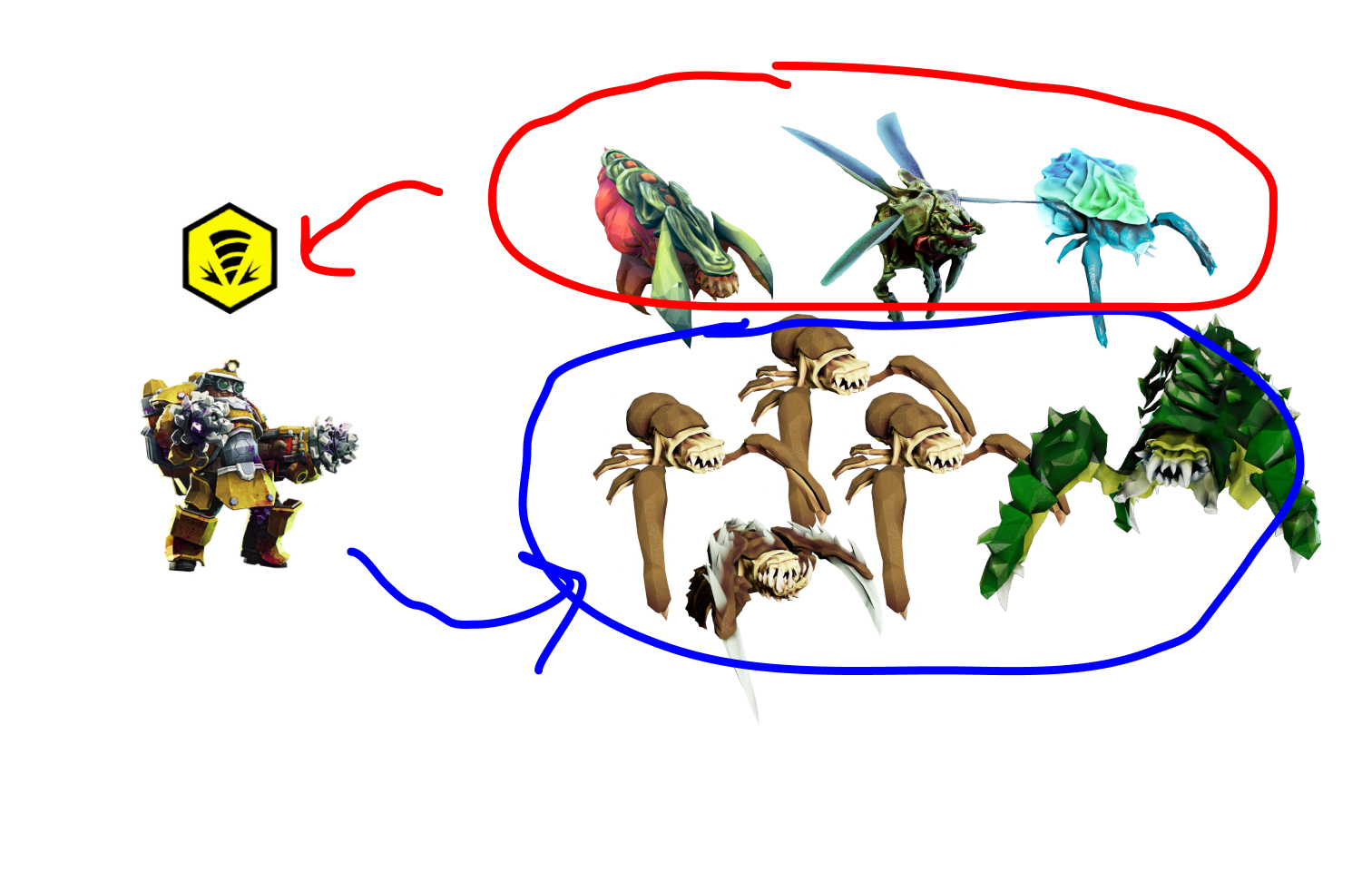
The Driller is the master of crowd control. Armed with a flamethrower, he excels at creating barriers of fire that incinerate any enemies foolish enough to charge forward. However, this specialization comes with a drawback: the Driller struggles against enemies that hang back and attack from a distance. A swarm of flying Mactera, for instance, can easily catch him off guard and turn the tide of battle against him.
Scout
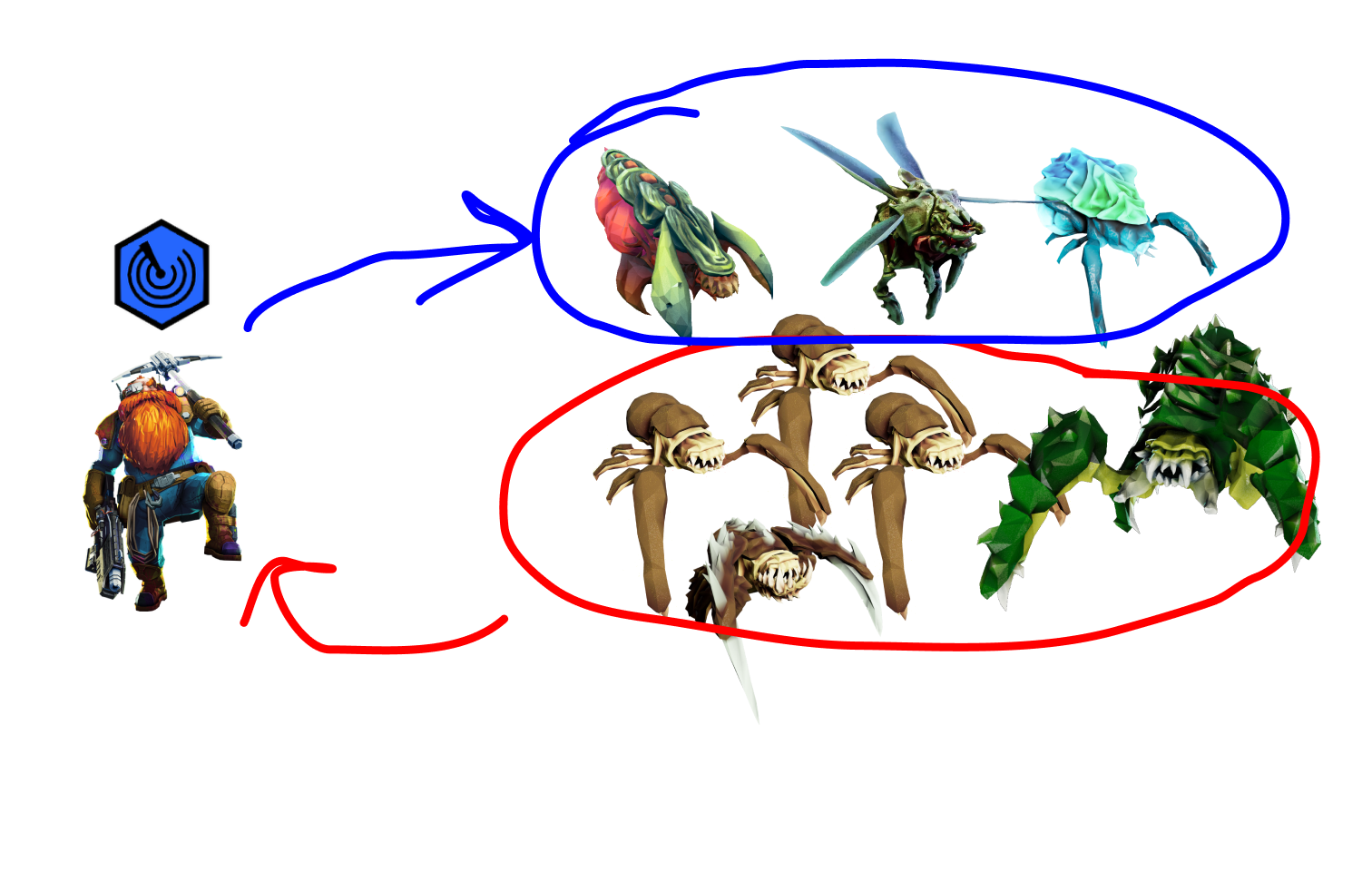
On the other hand, the Scout is highly effective against distant and fast-moving targets. His superior mobility, aided by his grappling hook, and his array of ranged weapons make him ideal for taking down aerial threats. However, the Scout’s arsenal is less effective against large swarms of ground-based enemies, which can overwhelm him quickly.
Engineer
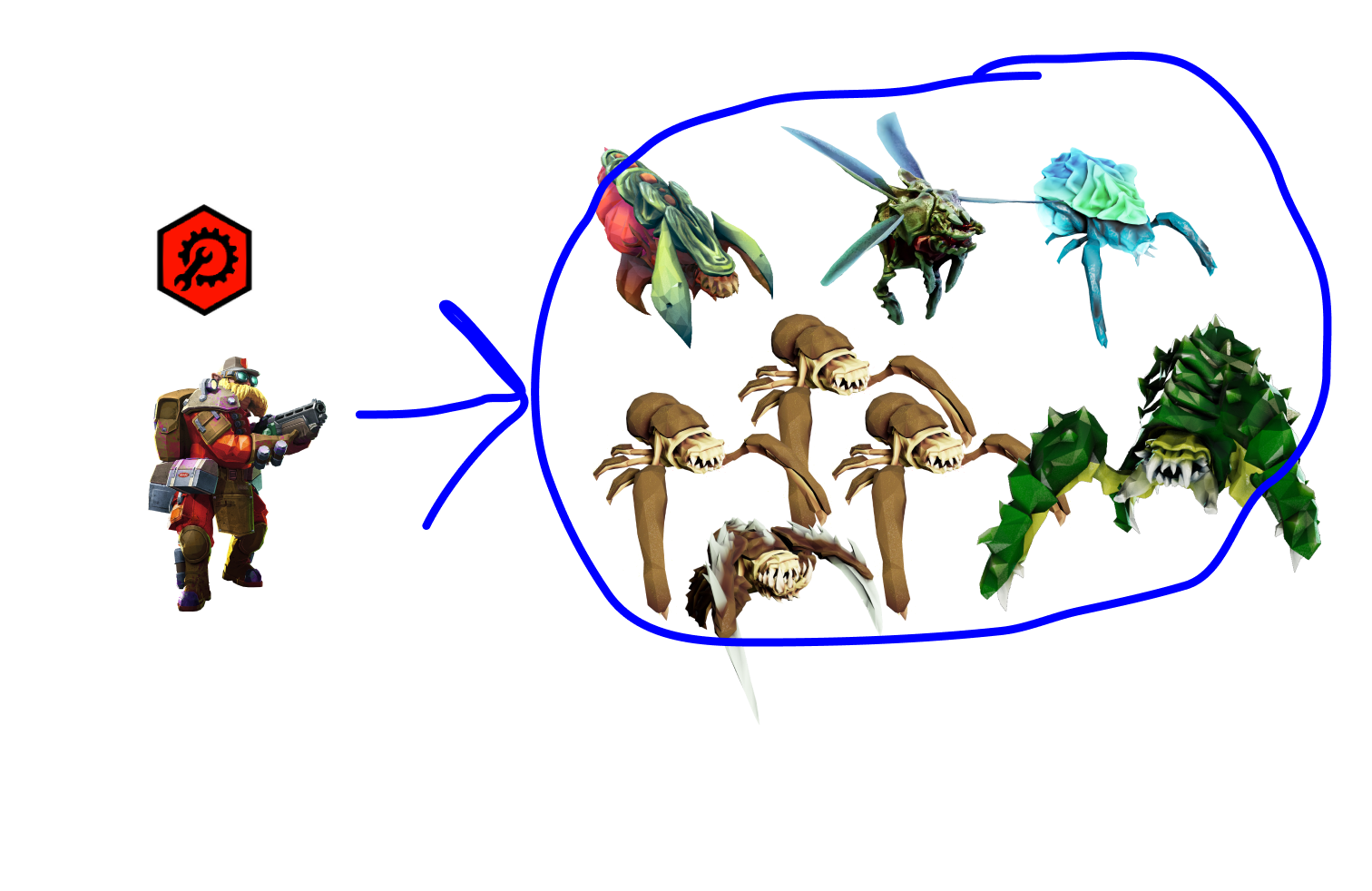
The Engineer has a versatile toolkit that allows him to handle a wide range of threats. Given enough time to set up, he can deploy turrets and traps to control the battlefield, taking out enemies from any distance. However, if an enemy gets too close or slips past his defenses, the Engineer struggles in direct combat and is vulnerable.
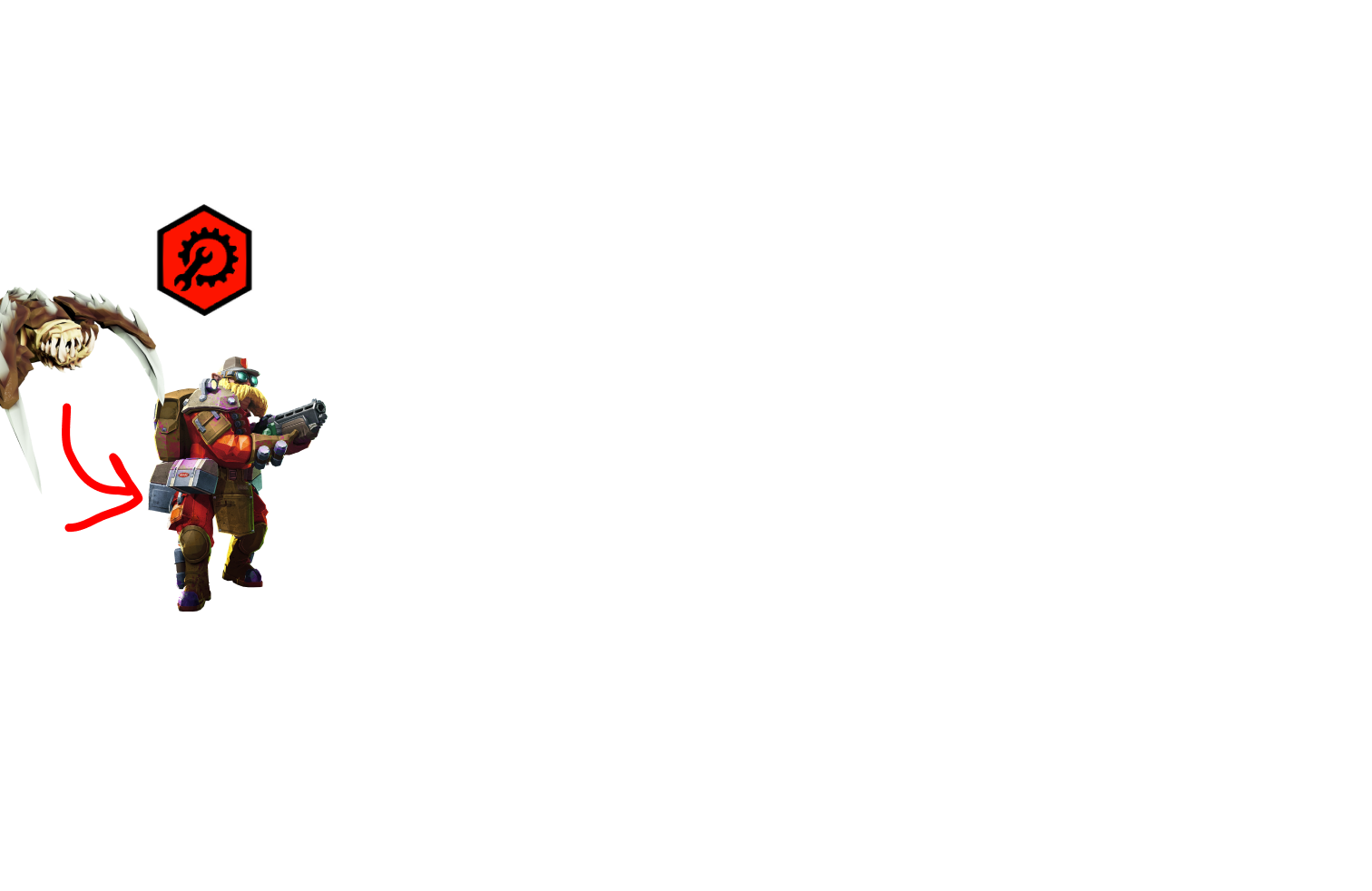
Gunner
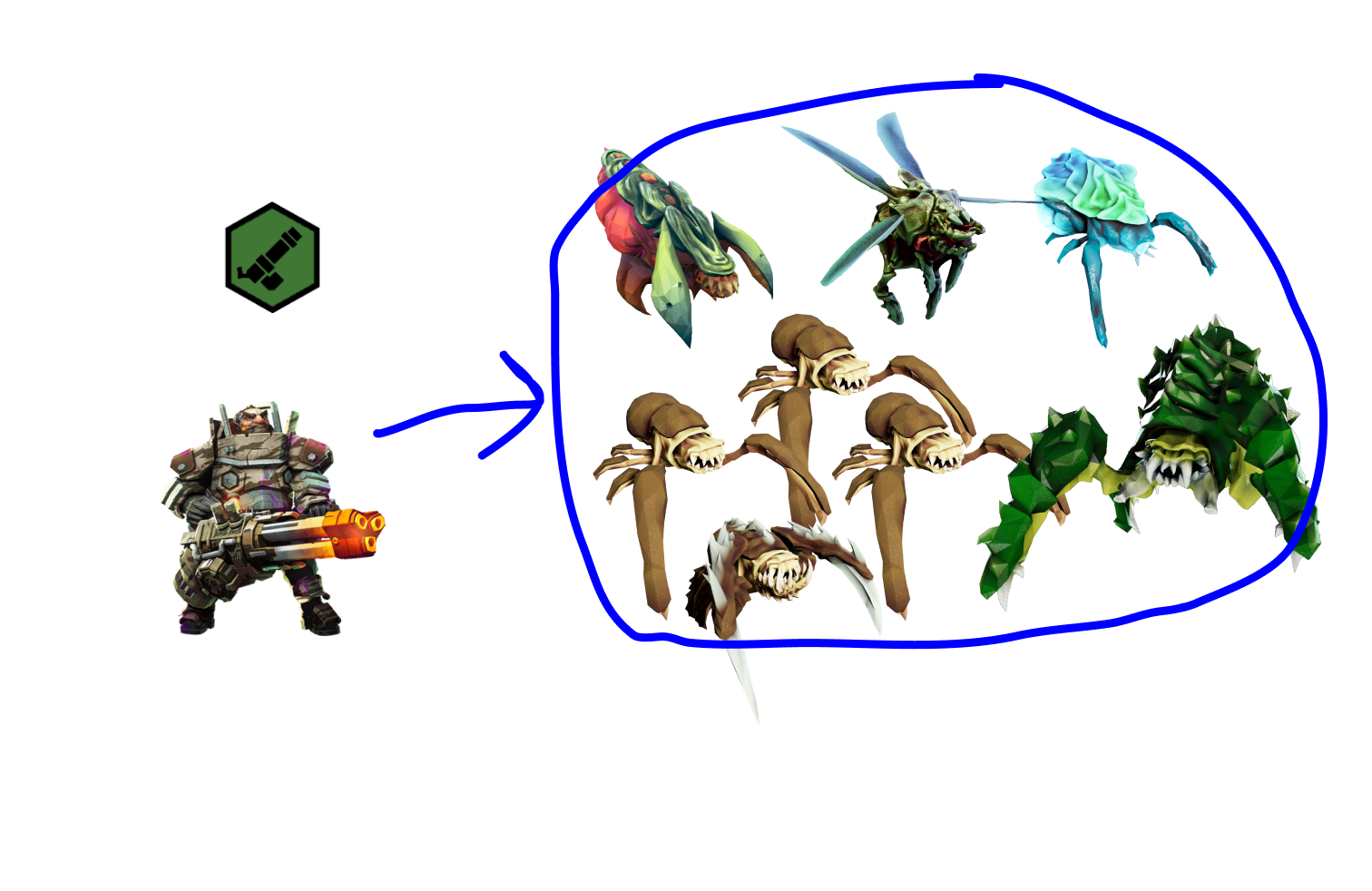
The Gunner boasts a well-rounded arsenal and an on-demand shield that can provide temporary invincibility, giving him a defensive advantage that the Engineer lacks. However, the Gunner’s weakness lies in his lack of mobility. Unlike the other classes, who can quickly traverse the environment with specialized tools, the Gunner relies on slow-moving ziplines to get around. If a mission drags on too long, he can run out of ammunition and become overwhelmed.
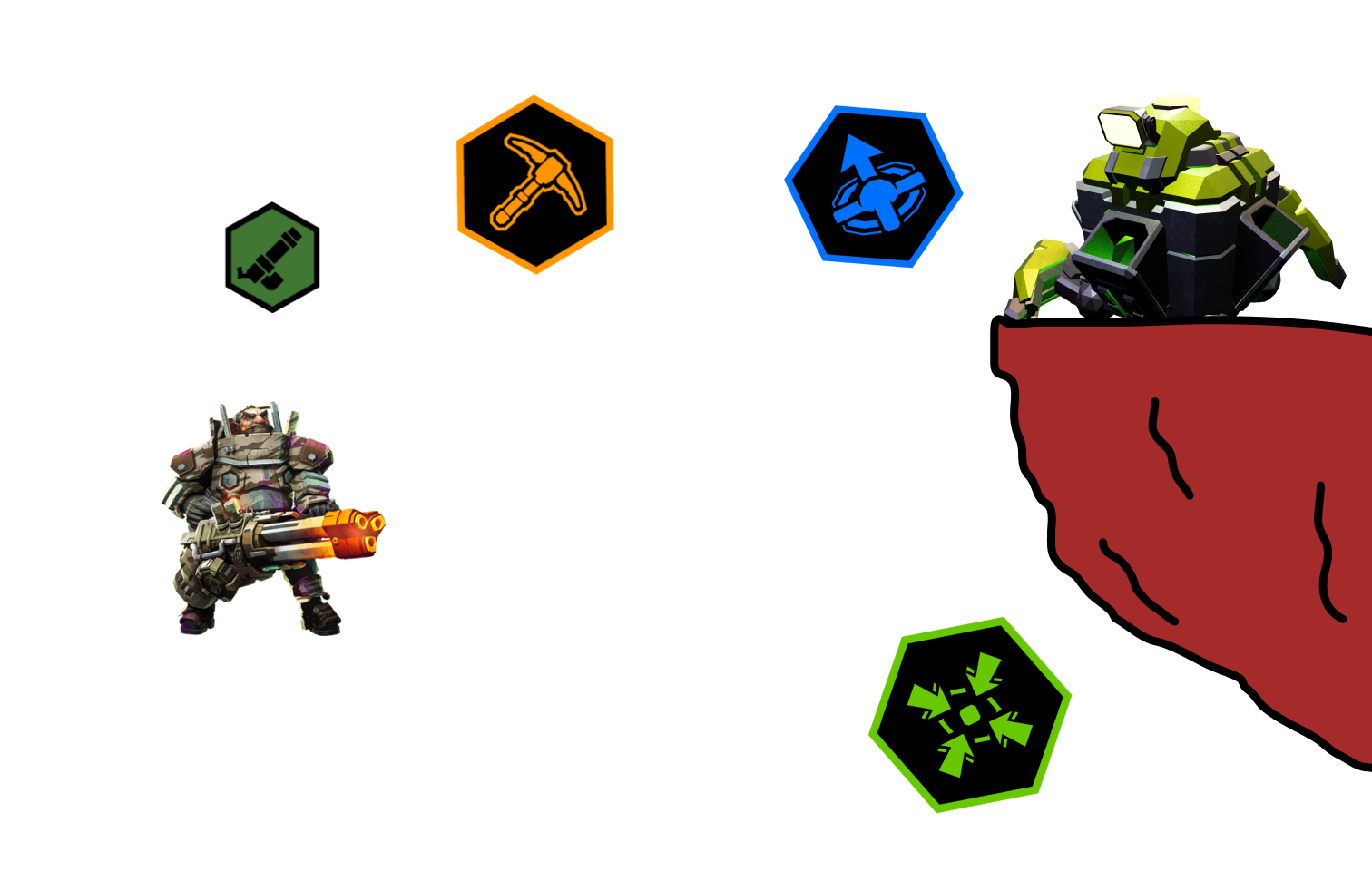
Dwarf Symbiosis in Action
Let’s explore how two of these classes—the Scout and the Driller—can exhibit mutualistic behavior without ever consciously coordinating.
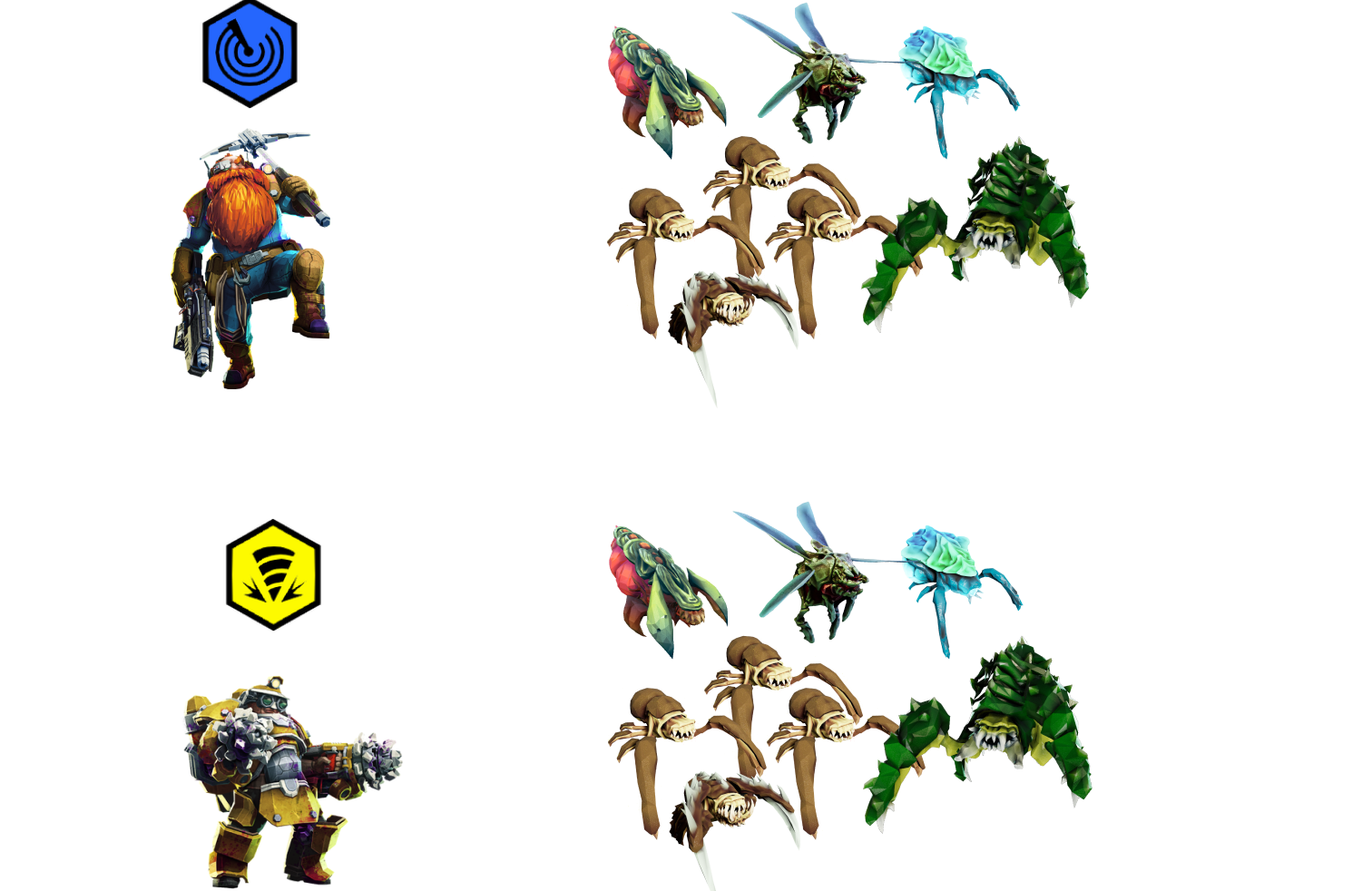
By placing them in close proximity to each other, something interesting happens.
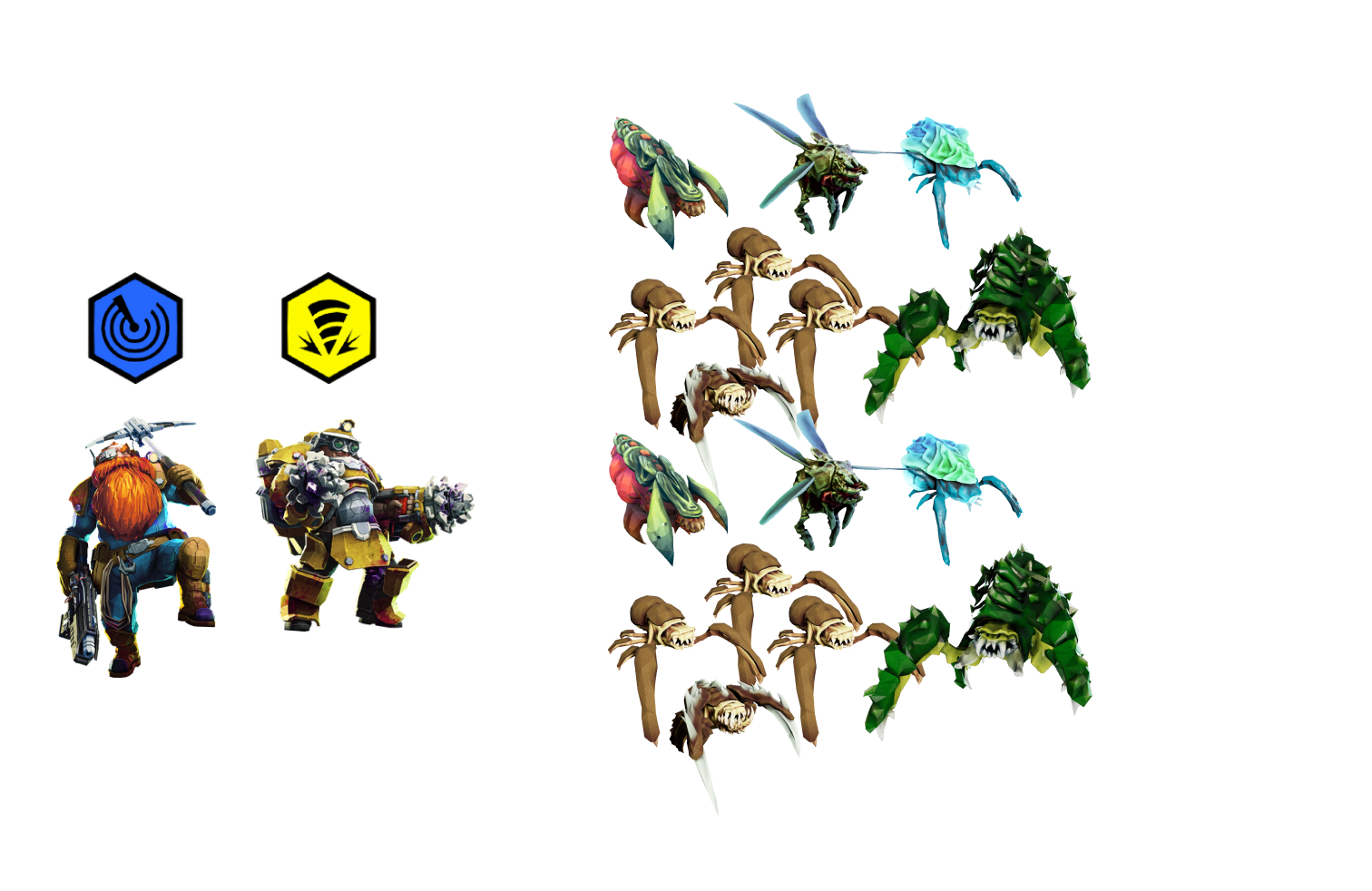
When the Scout and Driller are near each other, the enemies that target each of them naturally form into one large swarm. The enemies approaching the Scout are drawn close enough to become the Driller’s problem, and those approaching the Driller become the Scout’s concern. However, neither dwarf changes their behavior from how they would act if they were alone.
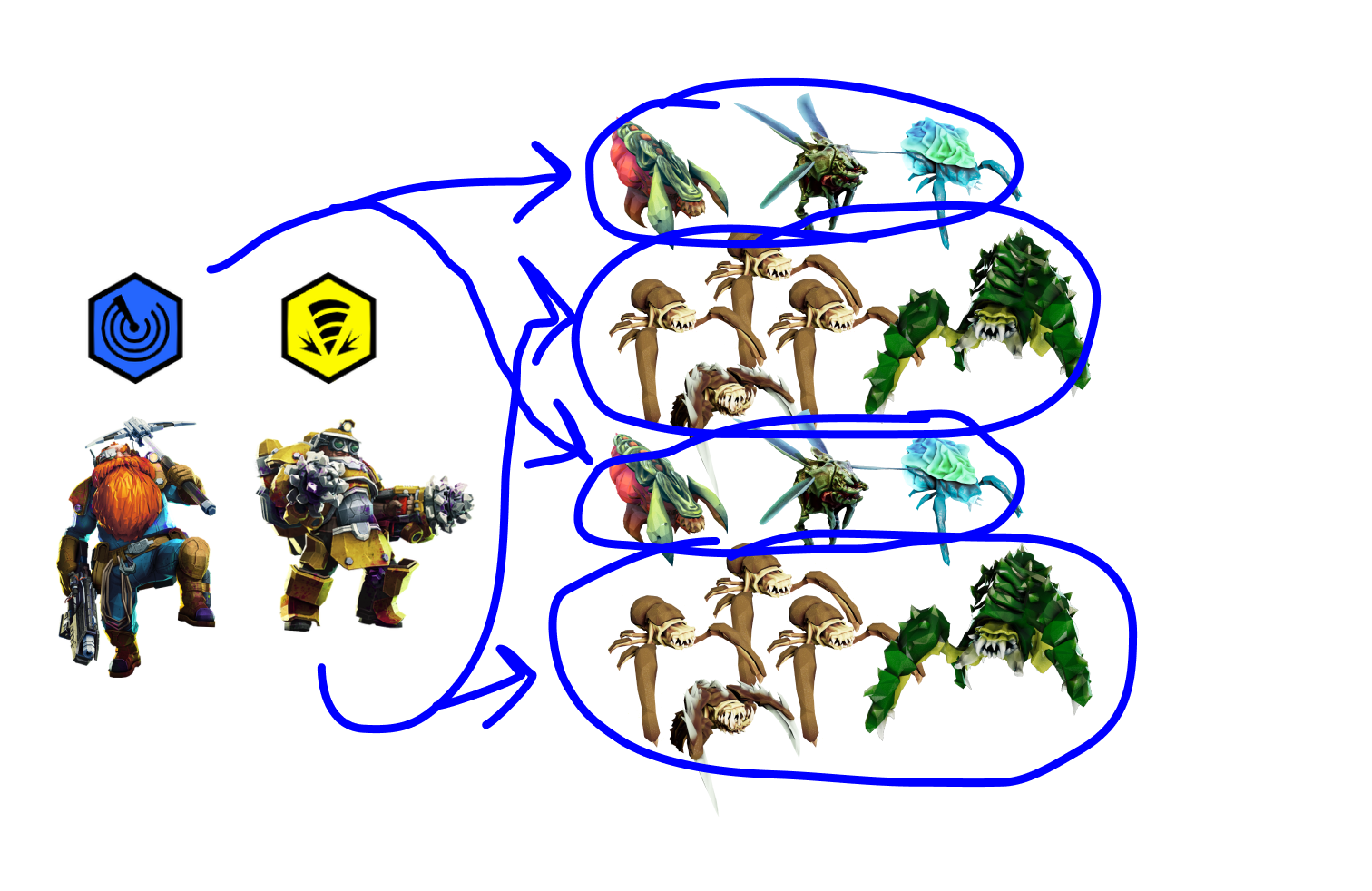
They each continue to do what they do best: the Scout takes down the ranged threats with precision, while the Driller eradicates the ground-based enemies that get too close. Together, they neutralize the swarm without consciously trying to help each other. Instead, their inherent strengths and weaknesses naturally complement each other, leading to a cooperative and effective defense. This is mutualism in action within the game environment—an emergent property of well-designed mechanics that encourages players to work together without explicit instructions to do so.
Addressing the Counterpoint
The level of apparent cooperation in Deep Rock Galactic hinges on the complementary strengths and weaknesses of the different classes. If you pair two Drillers together, for example, you only magnify the limitations of that class. Now, not only do they face the same challenges—like a lack of effective tools against ranged enemies—but the swarm they face doubles in size, compounding their problems. Without diverse abilities to counter a variety of threats, their ability to succeed is severely compromised.
What Does This Mean for Friendship?
So, what does this mean for the warm sense of camaraderie you feel while playing one of the best co-op games ever made? In reality, this feeling is often a case of mutual exploitation. Just like in nature, where organisms provide services to each other due to circumstance rather than altruism, our in-game cooperation is largely a product of necessity. If circumstances change—either in the game or in real life—making these interactions less beneficial, these relationships often dissolve.
We can see this in Deep Rock Galactic on lower difficulty settings. When the threats are minimal and enemies are easily defeated, any class can manage on its own. For example, the Driller, who normally struggles with flying enemies, can handle them without issue when the game is easy. Under these conditions, players don’t need to rely on each other and are more likely to spread out and play independently. This demonstrates a dose-dependent relationship between challenge and cooperation: the harder the game, the more players are incentivized to cooperate, and vice versa.
So, how should we view our real-life relationships with friends and loved ones? It can be unsettling to think about how many of our interactions are rooted in mutual exploitation.
It’s important to remember that mutual exploitation isn’t inherently negative. In fact, it can be incredibly productive. Butterflies, for instance, help pollinate flowers far more than they realize. Problems arise only when boundaries are crossed, such as when butterflies “nectar rob” without pollinating. In our own lives, understanding our roles in relationships and recognizing what others do for us can help prevent unintended oversteps. By being mindful, we can avoid becoming the “nectar robbers” of our social circles.
Leave No Dwarf Behind
Deep Rock Galactic also presents a unique form of cooperation that suggests humans are capable of genuine altruism. There’s a saying among players: “Leave no dwarf behind.”
At the end of a mission, after all the minerals are collected and oil is pumped, the corporation in the game prioritizes securing the resources over the safe return of the crew. While a rescue pod is provided, it usually lands far from the players, giving them only around five minutes to board before it departs, leaving any stragglers behind on the hostile planet of Hoxxes.
Despite this, when one dwarf goes down en route to the drop pod, it’s common to see the others turn back, risking everything to revive their fallen comrade—even if they’re just a few steps away from safety. This behavior isn’t mandated by the game mechanics; in fact, the game often discourages it. Technically, only one dwarf needs to reach the drop pod for the mission to be a success. The penalties for leaving a teammate behind are relatively minor compared to failing the mission entirely.
Reciprocal Altruism
This behavior can be seen as a form of altruism. But from a biological standpoint, it doesn’t seem to make sense. In nature, organisms are expected to act in ways that maximize their own fitness. Altruistic acts typically occur among genetic relatives because, by helping a relative reproduce, an organism indirectly ensures the survival of some of its own genes. For example, sacrificing yourself to save a sibling who then goes on to have multiple children can result in more of your genetic material being passed on than if you had a child yourself.
However, this doesn’t apply in Deep Rock Galactic because the players aren’t genetically related, and these dwarves aren’t reproducing anyways.
A better explanation might be reciprocal altruism, where an individual helps another with the expectation that the favor will be returned in the future. But even this theory falls short. Reciprocal altruism requires repeated interactions and the ability to recognize and remember each other, neither of which are guaranteed in a game with a large player base where players frequently change their appearance and usernames.
So why do players risk everything to save their teammates? It may simply be because it’s more fun that way. We’re no longer bound by the strict survival rules that govern the animal kingdom. As humans at the top of the food chain, with plentiful access to resources like food, water, and shelter, we have the luxury of acting in ways that don’t always make sense from a purely survival standpoint. We can afford to be a little reckless, to take risks, and to enjoy the fleeting company of others—whether in a game or in life.
In the end, maybe that’s what sets us apart: our ability to choose cooperation, not out of necessity, but out of a desire to connect, have fun, and share experiences. Rock and Stone, everyone.